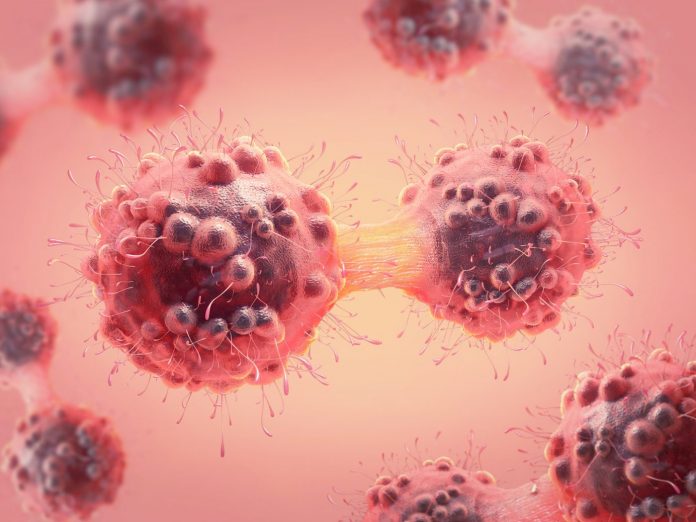
Harvard Medical School (HMS) Researchers have developed spatial maps of melanoma that show how individual cells interact as the cancer progresses. The maps reveal details of how melanoma suppresses the immune system as it takes over.
The findings are published in the journal Cancer Discovery.
When caught early, melanoma can often be cured by surgery, and there are now better treatments for advanced cases. However, much remains unknown about melanoma, including the details of how it develops in the earliest stages, and how to best identify and treat the most dangerous early cases.
“Cutaneous melanoma is a highly immunogenic malignancy, surgically curable at early stages, but life-threatening when metastatic,” the researchers wrote. “Here we integrate high-plex imaging, 3D high-resolution microscopy, and spatially-resolved micro-region transcriptomics to study immune evasion and immunoediting in primary melanoma. We find that recurrent cellular neighborhoods involving tumor, immune, and stromal cells change significantly along a progression axis involving precursor states, melanoma in situ, and invasive tumor.”
“The main purpose was to understand the early events in melanoma that lead to the development of a tumor,” said lead author Ajit Nirmal, PhD, a research fellow at HMS.
The HMS team is building the maps into a melanoma atlas that will be freely available to the scientific community as part of the National Cancer Institute’s Human Tumor Atlas Network.
“This was an opportunity to study melanoma at its inception and collect a resource of information that we can share with the community,” said Sandro Santagata, MD, PhD, an HMS associate professor of pathology at Brigham and Women’s Hospital and co-senior author on the paper with Peter Sorger, PhD, the HMS Otto Krayer professor of systems pharmacology.
Melanoma research has focused on two areas: DNA sequencing of early tumor samples to understand the genetic changes that occur as this particular cancer arises and single-cell RNA sequencing of the tumor’s immediate surroundings—the so-called tumor microenvironment—to profile the types of cells present. However, researchers have remained largely in the dark about how tumor cells and nearby cells are physically arranged in space, and how these cells interact on a molecular level as melanoma develops.
“What we still do not know is how the microenvironment is organized to allow a tumor to grow,” Nirmal said. “In theory, immune cells are supposed to identify tumor cells and kill them off very quickly, but clearly something has gone wrong, and that’s one of the primary reasons why we want spatial resolution.”
Such spatial resolution, along with fine-scale molecular data, became possible to achieve only recently with the advent of more advanced single-cell imaging technologies.
In the new paper, the researchers combined cyclic immunofluorescence (CyCIF) imaging, a multiplexed imaging technique developed by the Sorger lab, data with 3D high-resolution microscopy, and fine-scale RNA sequencing to create maps.
“We’re able to see everything from normal skin to early lesions to invasive melanoma, sometimes all in one piece of tissue,” Santagata said. “You end up with this map of how melanoma is developing right in front of you.”
The maps reveal what Santagata describes as “the battle between tumor cells and immune cells” that results in melanoma succumbing when immune cells are victorious, and melanoma progressing when tumor cells win.
The maps helped reveal the earliest stages of melanoma, so-called precursor lesions were composed of similar types and proportions of cells as normal skin, but these cells had a drastically different pattern of interaction, which included signs of immunosuppression.
“This indicates that there’s probably some level of restructuring within the tumor microenvironment that could potentially aid the development of the tumor,” Nirmal said.
In early melanoma, PD-L1—a protein that suppresses the immune system and allows cancer to flourish—was not expressed in tumor cells but was present in adjacent immune cells called myeloid cells. As the tumor grew, PD-L1-expressing myeloid cells interacted increasingly with T cells primed to kill tumor cells. This interaction between immune cells, rather than between cancer cells and immune cells, may be a mechanism the cancer uses to tamp down the immune system so it can progress unchecked.
“That may mean that the immune system is being suppressed, or inactivated, by itself, and not directly by the cancer,” Sorger said.
Taken together, the findings demonstrate that “these local environments involve many more physical interactions between cells than we might have thought,” Sorger said. “The cells are actually in an incredibly dense, communicating network.”
“The neighborhoods of the tumor cells and the interactions between cells tell us how the tumor may progress, and that’s an entirely new form of biomarker that hasn’t been applied before,” Santagata added. “With these new spatial maps, we have the ability to link cellular interactions with physiologic behavior, and eventually, clinical outcomes.”















